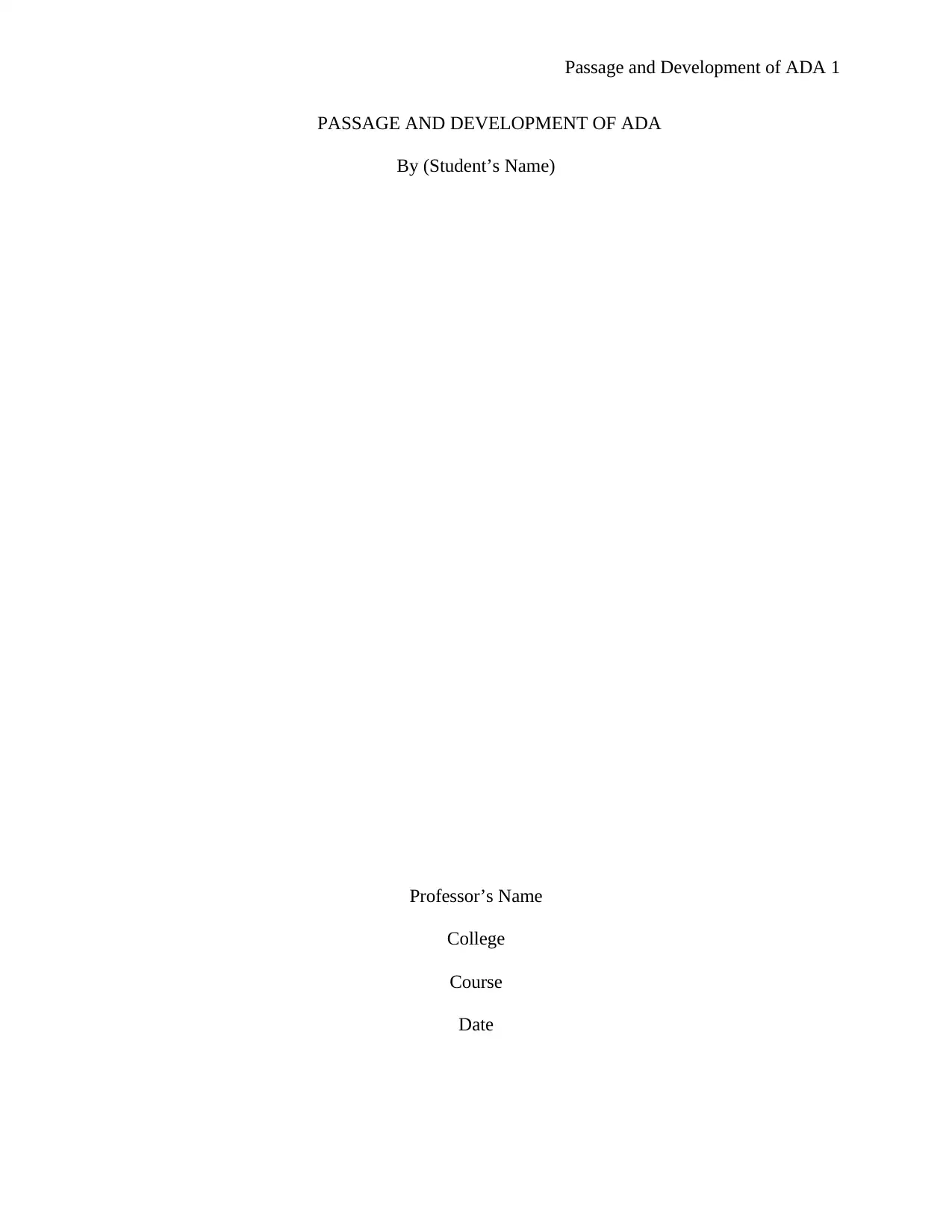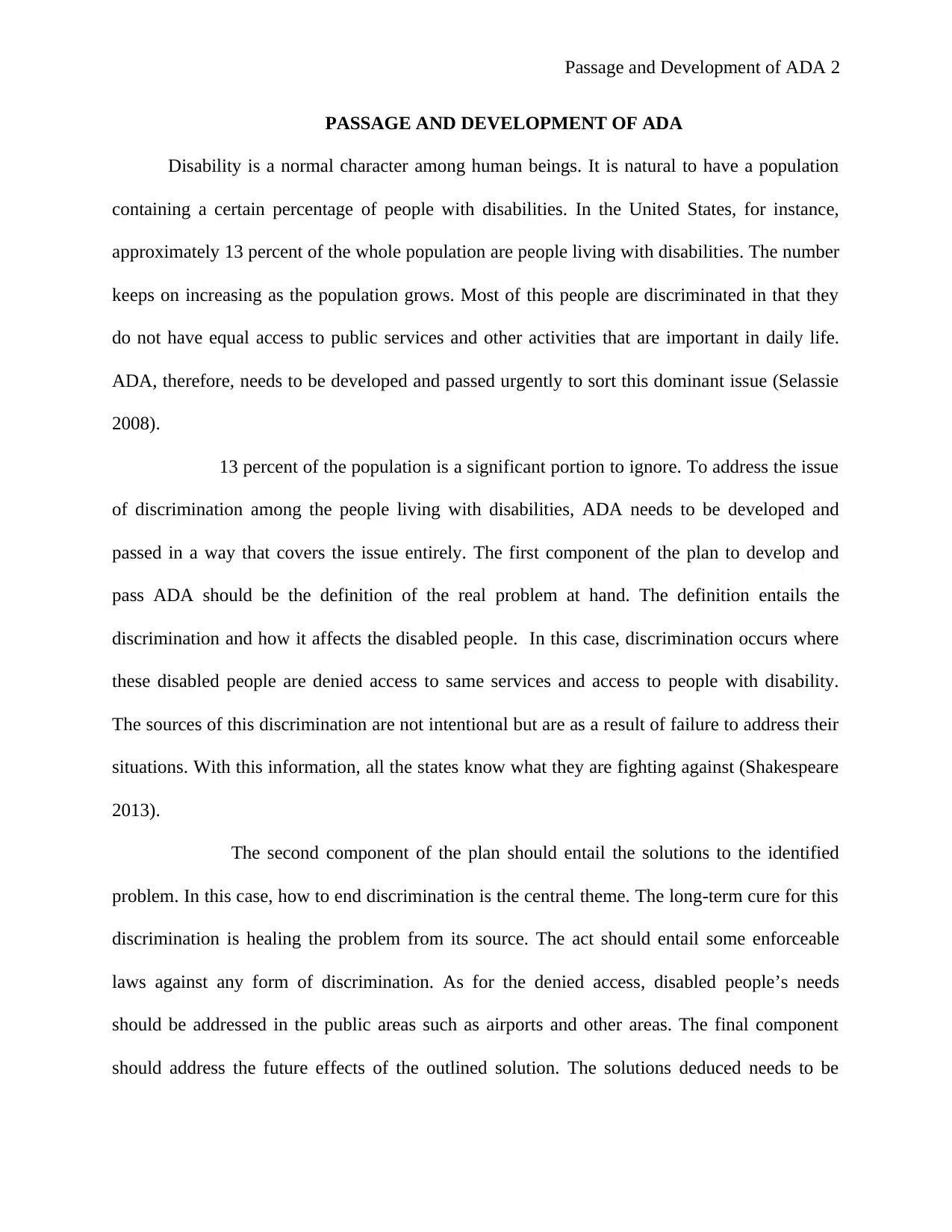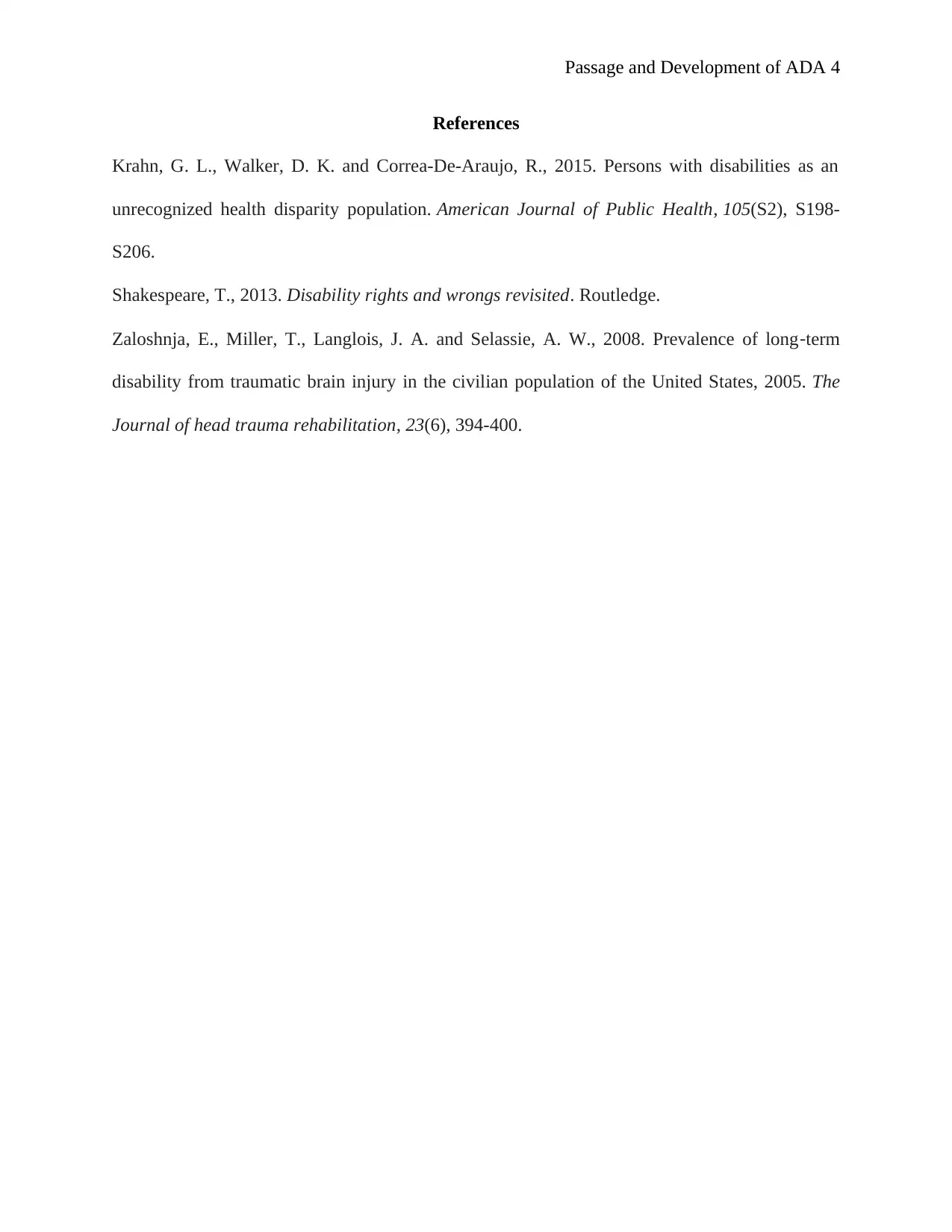The Passage and Development of ADA: A Comprehensive Legal Analysis
VerifiedAdded on 2023/06/11
|4
|530
|111
Essay
AI Summary
This essay discusses the passage and development of the Americans with Disabilities Act (ADA), emphasizing the need to address discrimination against people with disabilities. It highlights that a significant portion of the population, approximately 13 percent in the United States, faces discrimination in accessing public services and daily life activities. The essay outlines a three-component plan for developing and passing the ADA, including defining the problem of discrimination, identifying solutions such as enforceable laws and addressing accessibility needs in public areas, and considering the future effects of the implemented solutions to ensure societal balance. The ADA aims to provide equal opportunities and protect the civil rights of individuals with disabilities, mirroring protections for women and minorities.
1 out of 4









![[object Object]](/_next/static/media/star-bottom.7253800d.svg)